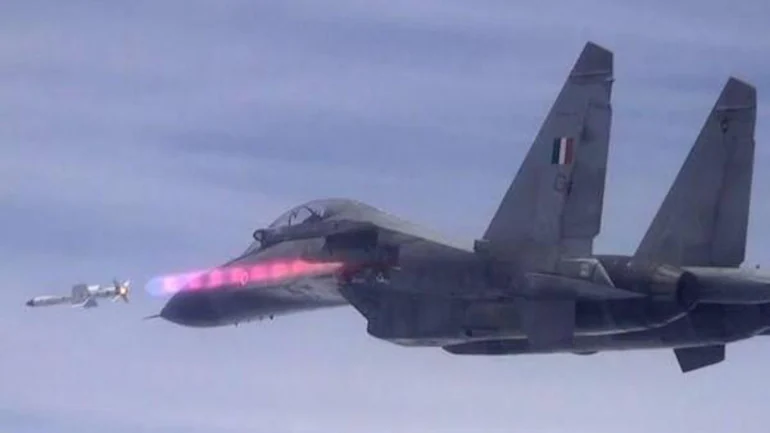India Will Test The Astra Mk-2 Missile With A Range Of 160 Km This Month, And The Astra Mk-3 By The End Of The Year: Report

- According to the Times of India article, the Astra Mark-3 is powered by solid-fuel ducted ramjets.
- The Meteor missile's ramjet motor also provides "greater energy to manoeuvre during the engagement's endgame."
According to a report in the Times of India, India will test the Astra Mark-2 beyond-visual-range air-to-air missile this month.
According to the article, the “first live launch” of the missile will take place from an Indian Air Force Su-30 MKI fighter.
Astra Mark-1 will also be tested this month using an indigenous seeker “rather than the present Russian AGAT one,” according to the report.
The Astra Mark-3, which has a range of roughly 360 kilometres (km), will be tested later this year, according to the report.
Context : The Astra missile was first developed in 2001.
In May 2003, the missile’s Mark-1 version was tested for the first time. The Astra Mark-I has been tested numerous times and incorporated with Su-30 MKI aircraft since then. It will be combined with Tejas Mark-1A and modernised MiG-29s in addition to Su-30 MKIs.
The 100-kilometer-range Astra Mark-1 has passed all of its tests. The government has ordered 248 missiles from state-owned Bharat Dynamics Limited, including 48 for the Indian Navy.
Although work on the Astra Mark-2 project had began informally much earlier, the Defence Research and Development Organisation (DRDO) told Parliament in 2018 that it had formally sanctioned it.
The Mk-2 variant is now undergoing testing.
Why this matters: The Astra series is being developed by India to replace the pricey Russian, French, and Israeli beyond-visual-range missiles.
The Astra Mark-2 has a range of approximately 160 kilometres.
The new missile will have an indigenous seeker and better jammer resistance.
A dual-pulse rocket motor will be installed on the missile, which is essential for its extended range.
It must be noted India is putting the solid-fuelled ducted ramjet (SFDR) technology to the test, which is essential for long-range air-to-air missiles.
According to the Times of India article, the Astra Mark-3 is powered by solid-fuel ducted ramjets.
The SFDR propulsion system, which was also tested in 2019, is essential for the missile’s terminal phase performance.
The development of SFDR technology will allow India to build its own long-range air-to-air missile capable of matching the capabilities of the best missiles in this class, such as the MBDA Meteor, which the Indian Air Force employs on its Rafales.
The Meteor missile’s ramjet motor also provides “greater energy to manoeuvre during the engagement’s endgame.”
“The ramjet motor [propulsion mechanism] generates thrust all the way to target intercept, delivering the greatest No-Escape Zone of any air-to-air missile,” according to the MBAD website’s documentation on the missile.
The most recent SDFR technology test took place in April of this year. In March and December of 2021, the technology was also put to the test.







Facebook Comments